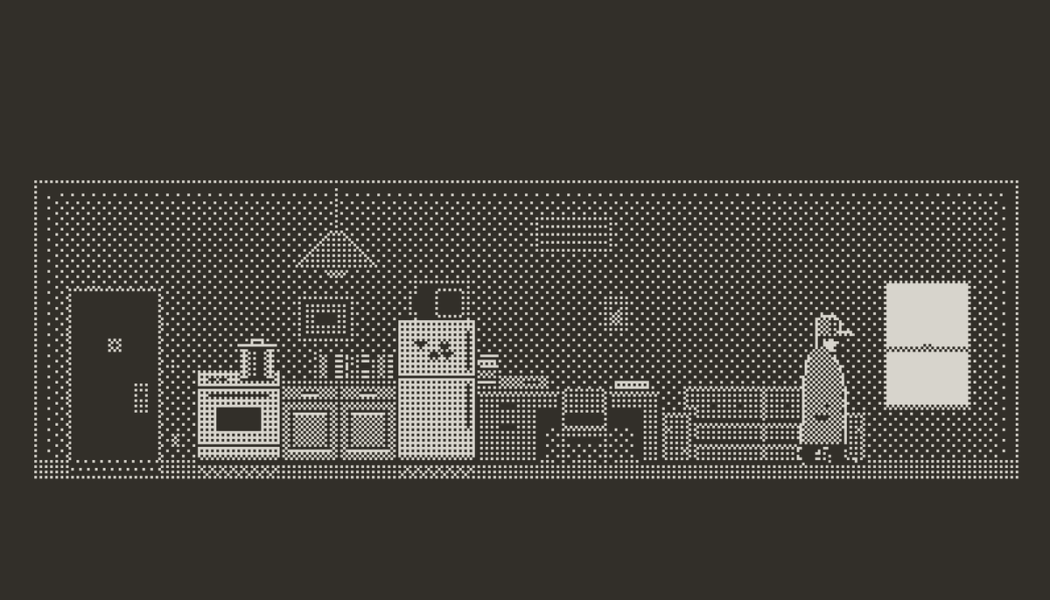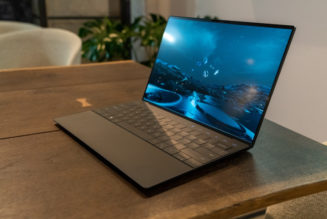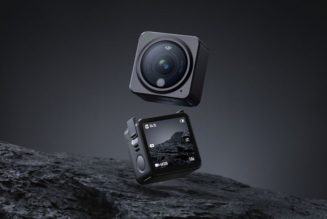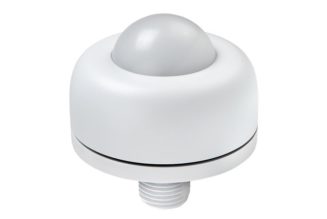If things go as expected, four new dedicated video game handhelds will launch this year. And each is primed to offer something different. The next Switch has a brighter, more vibrant OLED screen; Valve’s Steam Deck is a gaming PC in your hands; and Analogue’s Pocket handheld recreates the original Game Boy hardware while adding modern upgrades like a better LCD display and the option to connect to an HDTV.
And then there’s the Playdate from Panic. Whereas the aforementioned handhelds are almost uniformly technological upgrades, the Playdate offers something much weirder. It looks kind of like a Game Boy that comes from an alien world. There are familiar elements, like a D-pad and face buttons, but many of its games are controlled by a crank that slots into the side. And those games are only available in black and white, and they’ll eventually be released as part of weekly mystery drops.
It sounds strange and fascinating, and I had the chance to head into the PlayDate’s parallel universe over the last few days with a near-final version of the device. It definitely is weird — but that’s also what makes it exciting.
The most striking thing about the Playdate is its electric yellow color scheme. It stands out in a world of smartphones that are mostly black slabs. It’s also a square, measuring at 76 x 74mm, as opposed to the more common rectangle, and it’s only 9mm thick. Basically, it’s tiny. About half the front is taken up by a glossy 400 × 240 display, with a shiny D-pad and A and B buttons below, much like on an original Game Boy. There’s also a home / menu button on the top right corner, a lock button on the right shoulder, and a headphone jack and USB-C port on the bottom. A tiny, yet surprisingly loud, speaker runs down the right side of the display. So far, nothing too strange, until you see the silver crank jutting out the side. The PlayDate’s crank is about an inch long, and when not in use its handle slots nicely into the side of the device.
:no_upscale()/cdn.vox-cdn.com/uploads/chorus_asset/file/22731082/Saturday_Edition.png)
The company says that the version I played with is the final hardware (the software is still being tweaked) and it’s a great device to hold. The body of the Playdate has a nice matte texture that’s both comfortable and doesn’t smudge, while the buttons — and particularly the D-pad — are satisfyingly clicky. If you have big hands it might be a little cramped, as the pad and buttons are very close together, but I found it comfortable enough for long sessions. Most importantly, it’s fun and playful. This is clearly a device meant for playing video games.
The display is similarly, uh, distinct. It’s crisp, yet is entirely black and white and has no backlight. It’s kind of like playing games on a high-end Kindle. It’s not reflective, as opposed to, say, a Switch. I had no problems playing games outside in the sun, even with games where the graphics were dark. In a nice touch, when the handheld goes to sleep, its display turns to a simple analog clock. No backlight is a bummer, but it at least means the Playdate has great battery life; Panic promises eight hours of continuous gameplay, and that proved about right during my short time with the device.
My preview unit had four games included, and they were all drastically different from each other. Probably the most notable is Crankin Presents: Time Travel Adventure, from Katamari creator Keita Takahashi. It’s essentially a platform game about a guy who is constantly late for a date. In order to get there on time, he has to avoid floating butterflies, literal hurdles, and charging pigs. The twist is that you don’t control the titular Crankin directly. Instead, you move him back and forth through time. The game is controlled entirely with the crank, which you can use to either fast forward or rewind his actions, which are independent of the obstacles. So if a butterfly floats by, for instance, you’ll want to fast-forward Crankin to a point where he’s bent over smelling a flower, so the bug passes by safely. It took me a little while to figure out what to do, but once I grasped the concept the game became a lot of fun.
Elsewhere is Lost Your Marbles, a mashup of a visual novel and a puzzle game. In it you follow a young girl named Prota who works at some kind of scientific facility that’s researching memory. I won’t pretend to understand it, but for some reason Prota is able to access certain memories by playing a classic ball-in-maze puzzle. It’s weird, but the crank is well-suited for it, as you rotate it to move the maze around the ball in search of a memory. Lost Your Marbles also looks great, with big, bold character portraits that make the most out of the hardware’s limited capabilities, buoyed by some really silly and hilarious writing. It’s a fun, quirky remix of genres that feels right at home on the Playdate.
:no_upscale()/cdn.vox-cdn.com/uploads/chorus_asset/file/22731085/Lost_Your_Marbles.png)
The most surprising game I played was Saturday Edition. It was surprising because of how straightforward it is. It’s a classic point-and-click style adventure and it doesn’t utilize the crank at all (at least from what I played); instead, you use the D-pad and buttons to wander around a city, collecting clues and solving puzzles. It’s been stripped down just enough so that it feels comfortable to play with only two buttons, and the grainy visuals make it feel like a long-lost PC game. If nothing else, Saturday Edition is a good indication that the Playdate will be home to more than just silly crank-controlled games. It works well enough for more traditional titles as well.
Rounding out the quartet is Whitewater Wipeout, an arcade-style surfing game that I can’t say much about because I could not figure out the controls. From what I can tell, you’re supposed to use the crank to spin the board and ride a wave, but no matter how much I tried I couldn’t stay afloat for more than a few seconds at a time. It’s entirely possible this is a “me” problem, but it does show that the unique nature of the crank controls could lead to some steeper than usual learning curves.
The one thing I wasn’t able to experience with my Playdate is actually one of the most important aspects of the device: surprise. When the handheld finally launches, new games will be released in “seasons.” Essentially, over the course of each season a new mystery game will appear on your Playdate once a week. The release will be the same for everyone, making for a kind of unique appointment viewing-style experience. The full breadth of what the Playdate has to offer will rely a lot on what these games are like, as well as the communal discovery process. But a few days with the handheld has made me excited for what mysteries are in store.
Preorders for the Playdate open on July 29th, with the first batch of units expected to start shipping “towards the end of this year.”










